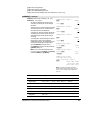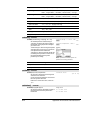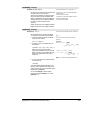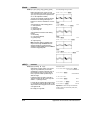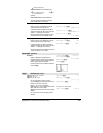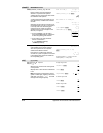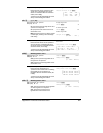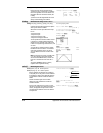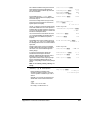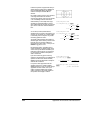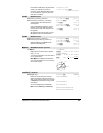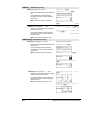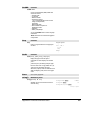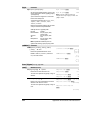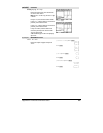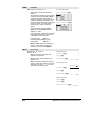
Appendix A: Functions and Instructions 879
Due to default cancellation of the greatest common
divisor from the numerator and denominator of
ratios, solutions might be solutions only in the limit
from one or both sides.
(x+1)(xì 1)/(xì1)+xì3 ¸
2ø xì2
solve(entry(1)=0,x)
¸ x = 1
entry(2)|ans(1)
¸ undef
limit(entry(3),x,1)
¸ 0
For inequalities of types ‚, , <, or >, explicit
solutions are unlikely unless the inequality is linear
and contains only
var
.
solve(5xì 2 ‚ 2x,x) ¸ x ‚ 2/3
For the EXACT setting of the Exact/Approx mode,
portions that cannot be solved are returned as an
implicit equation or inequality.
exact(solve((xì a)
e
^(x)=ë xù
(x
ì a),x)) ¸
e
x
+ x = 0 or x = a
Use the “|” operator to restrict the solution interval
and/or other variables that occur in the equation or
inequality. When you find a solution in one interval,
you can use the inequality operators to exclude that
interval from subsequent searches.
In Radian angle mode:
solve(tan(x)=1/x,x)|x>0 and x<1¸
x
=.860...
false is returned when no real solutions are found.
true
is returned if solve() can determine that any
finite real value of
var
satisfies the equation or
inequality.
solve(x=x+1,x) ¸ false
solve(x=x,x)
¸ true
Since solve() always returns a Boolean result, you
can use “and,” “or,” and “not” to combine results
from
solve() with each other or with other Boolean
expressions.
2xì 11 and solve(x^2ƒ9,x) ¸
x
1 and x ƒ ë3
Solutions might contain a unique new undefined
variable of the form @n
j
with
j
being an integer in
the interval 1–255. Such variables designate an
arbitrary integer.
In Radian angle mode:
solve(sin(x)=0,x) ¸ x = @n 1ø p
In real mode, fractional powers having odd
denominators denote only the real branch.
Otherwise, multiple branched expressions such as
fractional powers, logarithms, and inverse
trigonometric functions denote only the principal
branch. Consequently,
solve() produces only
solutions corresponding to that one real or principal
branch.
Note: See also
cSolve(), cZeros(), nSolve(), and
zeros().
solve(x^(1/3)=ë 1,x) ¸ x = ë1
solve(
‡(x)=ë 2,x) ¸ false
solve(
ë ‡(x)=ë2,x) ¸ x = 4
solve(
equation1
and
equation2
[and
…
], {
varOrGuess1
,
varOrGuess2
[,
…
]}) ⇒
⇒⇒
⇒
Boolean expression
Returns candidate real solutions to the
simultaneous algebraic equations, where each
varOrGuess
specifies a variable that you want to
solve for.
Optionally, you can specify an initial guess for a
variable. Each
varOrGuess
must have the form:
variable
– or –
variable
=
real or non-real number
For example,
x is valid and so is x=3.
solve(y=x^2ì2 and
x+2y=
ë1,{x,y}) ¸
x=1 and y=ë1
or x=
ë3/2 and y=1/4



